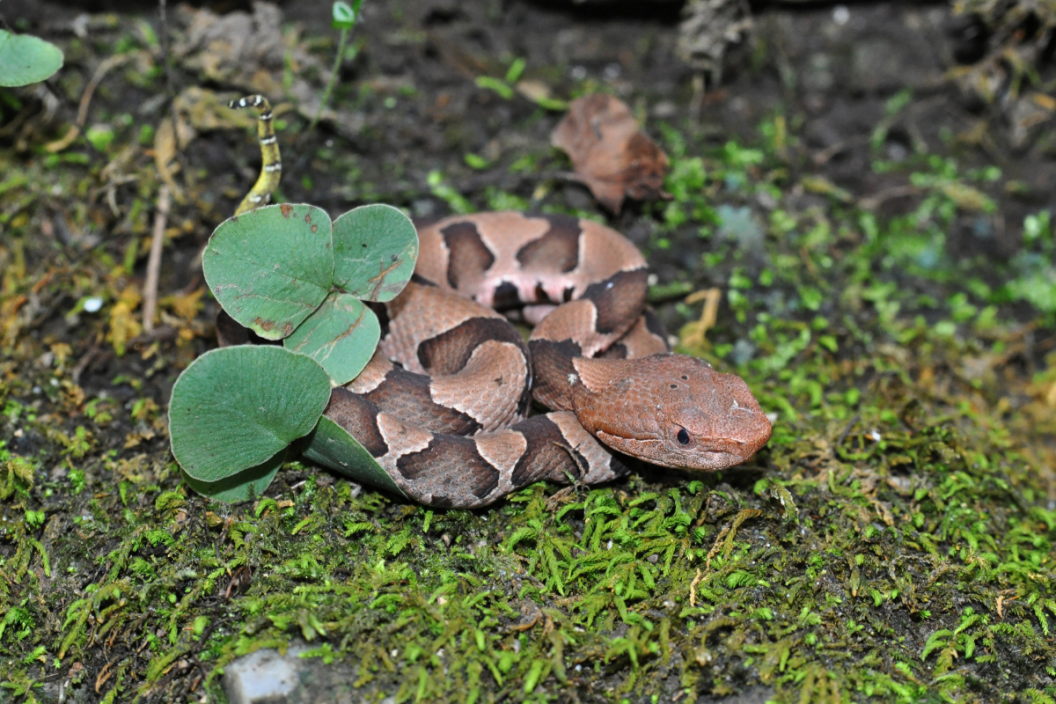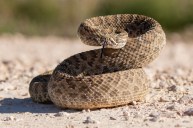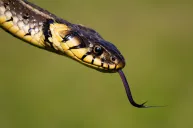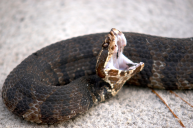Copperhead snakes and their babies are some of the most common venomous snakes in North America. Here's how to spot them so you can protect your pets.
A species of venomous snakes known as pit vipers, copperhead snakes (Agkistrodon Contortrix) are some of the most common venomous snakes that can be found in many parts of North America — especially if you reside in the more southern states like Missouri, North Carolina, Arkansas, Alabama, and Texas to name a few.
In fact, these slithering reptiles are the only venomous snakes in North Carolina and account for over 90 percent of venomous snakebites in the state, while copperheads are among the 15 potentially dangerous subspecies and species of snakes residing in Texas; others in the Lone Star state include Cottonmouths and Rattlesnakes.
When is Baby Copperhead Season?
https://www.instagram.com/p/CGC62TvjFcR/
Like all animals, there is a time when copperheads are known to give birth to their young: For these venomous snakes, the typical time of year for birthing baby copperhead snakes is late August to early September (or late summer to early fall if you prefer!) — a.k.a. baby copperhead season. Baby copperheads may be tiny and perhaps even cute, but trust us, these babies are born live and ready to defend themselves; they definitely shouldn't be underestimated and should be treated the same as adult copperheads.
If you reside in a common copperhead state, you might already be aware of the danger of these legless little guys, but for those who aren't familiar with baby copperhead season, be sure to be on the lookout for baby copperhead snakes when the time comes.
What Does a Baby Copperhead Look Like?
https://www.instagram.com/p/CGX_-7CFffS/
Baby copperheads are often mistaken for non-venomous snakes like water snakes, rat snakes, and corn snakes. Even though they are an easily camouflaged species of snake and can be quite hard to spot, there are certain things you can look for when you are trying to identify these little babies.
First of all, while these baby snakes look very similar to adult copperheads as they both sport the same coloration of light brown or light tan, or like a reddish-coppery color, some baby and young copperheads can be dark gray in color. Along the back, these snakes also have crossbands of an hourglass pattern in dark brown, dark gray, or reddish-brown.
Another distinguishing mark to tell whether or not it's a baby copperhead is by looking at the color of the tail-tip: many baby copperhead snakes have a bright yellow tail tip or a green tail. This is to help the babies find food by attracting and luring its prey — by tricking its prey into thinking the tail is a worm, and then striking once it came close. As copperheads mature, their bright yellow or green tail fades into a more natural color like the adults.
While a copperhead bite is not fatal, it is extremely painful. Make sure to keep yourself and your pets away from it and if ever bitten, seek medical attention immediately.
Seen a copperhead snake before? Let us know on the Wide Open Pets Facebook page!




